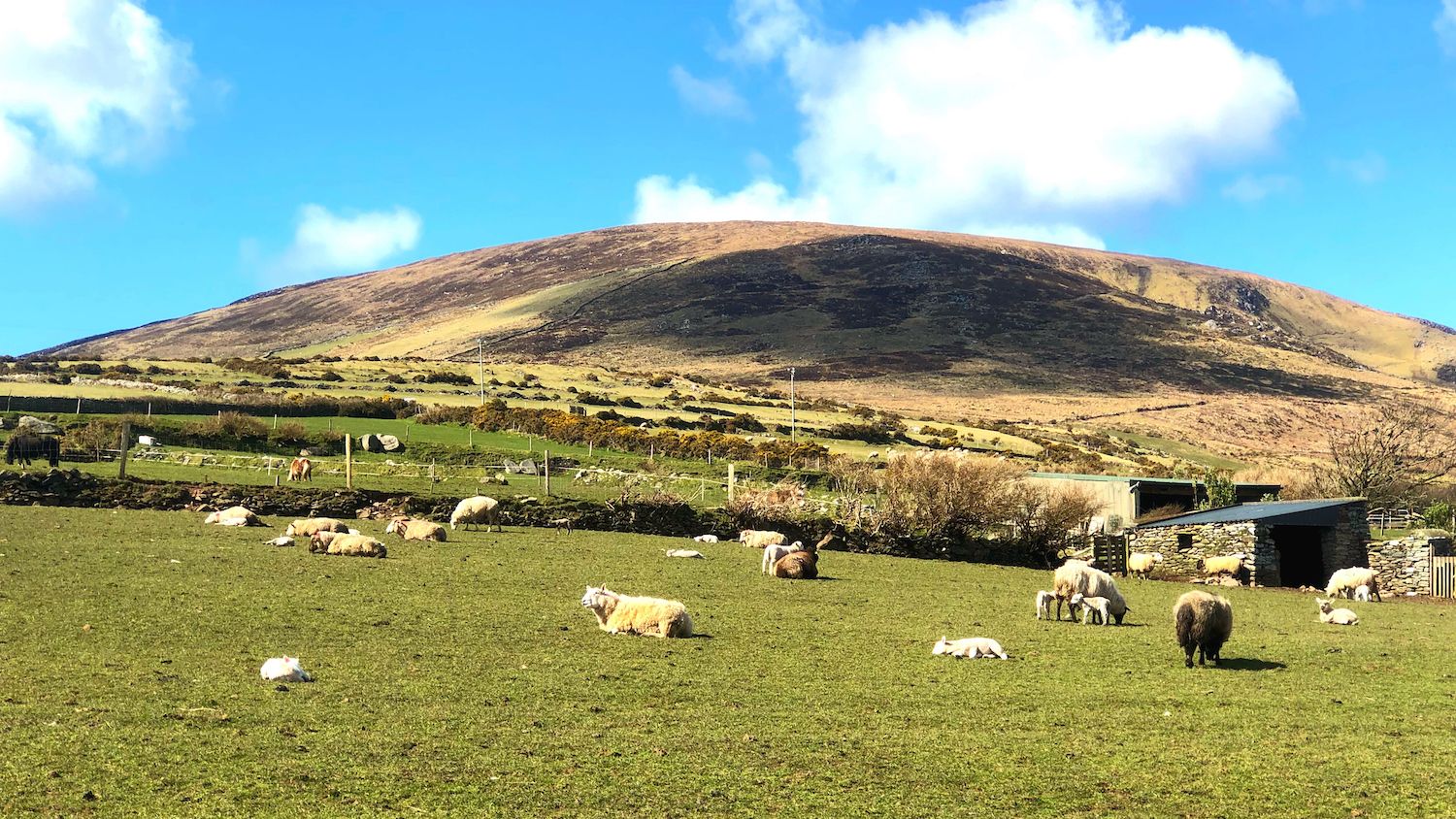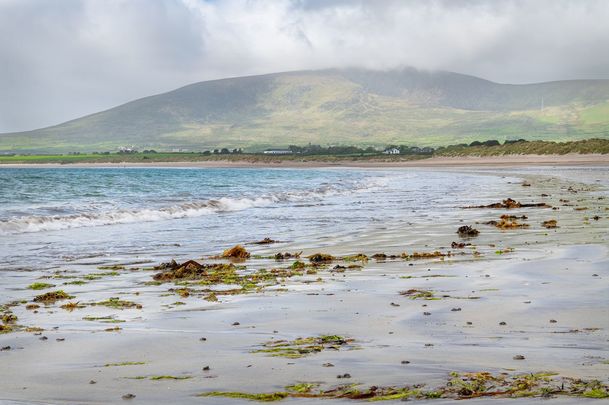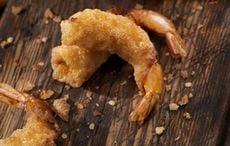Modern superhero stories have nothing on the epic Battle of Ventry when the Fianna faced down invading forces from all corners of the earth, writes Deanna O’Connor.
Sitting at my writing desk, gazing out the front window of the house, my eyes rest on the calm sheltered waters of Ventry Bay. With the gentle curve of the long beach and the sturdy solid presence of Mount Eagle in the background, this scenic view at the start of the world-famous Slea Head Drive on the beautiful Dingle Peninsula seems like an unlikely location for warfare and carnage.
Myth or history
When I moved to the area, it unsettled me at first to think that every day I looked out on the site of famed bloodshed and death, a battle that was reputed to have raged on for a year and a day. Yet, the more I read into the history of the battle, the more I managed to half-convince myself it was myth, not fact. How much of these ancient tales are true, and how much is exaggerated, we will never know.
‘Cath Fionn Trá’ or the Battle of Ventry, is one of the great tales of the Fianna, the legendary band of Celtic warriors, as they defend Ireland from invasion by Dáire Donn, the King of the World. The existence of the Fianna is mentioned in a 17th-century text, "Foras Feasa ar Éirinn" (a "History of Ireland", or literally translated, "Foundation of Knowledge on Ireland"), written by a historian of the time Geoffrey Keating. Its detractors would point out that the early history is largely rooted in myth.
This article was originally published in Ireland of the Welcomes magazine. Subscribe now!
Tracing the history of Ireland from creation right up to the Norman invasion in the 12th century Foras Feasa circulated only in manuscript form as Ireland was under English rule, and the authorities refused to allow it to be printed.
However the legends of the Fianna are held so strongly in folk memory and story cycles that even today, the Irish national anthem, "Amhrán na bhFiann" (The Soldier’s Song), composed in late 1909/early 1910, is a nod to these mighty warriors.
Calm waters
Ventry Bay is a large sheltered enclosed natural harbor, its mouth open at the east, facing the sun as it rises beyond the bare hills of the Iveragh Peninsula which face it. The headland at the opening is named Rinn na Báirce (Barque Point), after the boat used by Dáire Donn when he sailed into the bay. Today there are two piers, Cuan on the south side and Ventry on the north side, opposite each other, and 2km apart (a little over a mile). The waters make a good training ground for a swimmer, once they avoid the twice-daily boat trips departing for the Blasket Islands in the summer season. The long sweeping curve of the sands ringing the western side of the bay is like an outdoor gym; between swimmers, dog walkers, runners and a game of hurling played on the sands on a Sunday morning, it’s a rare occasion to cover the distance without bumping into a familiar face.

The Great Blasket Islands.
After taking their exercise on the sands of the beach, locals and visitors sit outside Tigh Ui Chuinn (Quinn’s Pub), with a creamy pint of Guinness to survey the bay spread out before them at their leisure. It’s hard to imagine a band of warriors in the same spot, ships crowding the bay carrying armies and kings from every country in the world, and blood spilled across the pristine sands.
Epic battle
Legend has it that this now-peaceful village and scenic beach at Ventry was the scene of one of the world’s most epic battles. The king of the world ordered all the countries and armies together to invade and seize Ireland, the only country that had not surrendered to his powers. Among the invaders, Bolcán the King of France had a particularly strong motive, as the famous Fionn Mac Cumhaill (Finn McCool)—that legendary warrior who had tasted the Salmon of Knowledge—had seduced and absconded with both the wife and daughter of Bolcán.
The harbor was filled with enemy ships, so many that no water could be seen between them, and the armies set up camp among the sand dunes. Finn MacCumhaill, upon hearing rumors of an invasion, had sent sentries to watch over every harbor, and one was keeping a watchful eye on Ventry from the vantage point of Cruach Mhárthain, a nearby hill, distinctive by its pointed top.
As the invading soldiers plundered local forts and villages, Conn Crithir the sentry was the first to go into battle, assisted by a magical spell woven around him by three sisters. It gave him strength in battle and restored him even if he was injured.
While negotiations were made and the invading forces agreed to wait until the Fianna arrived before commencing the battle proper, individual warriors engaged in bouts of combat. Then the Tuatha Dé Danann, a supernatural tribe, came and set their warriors to fight against the King of the Cat-headed People and the King of the Dog-headed People.
This article was originally published in Ireland of the Welcomes magazine. Subscribe now!
Eventually, Fionn and the Fianna arrived in a magnificent procession, decked out for battle with banners and flags. They set up camp at a ring fort still known as Ráth Fhinn, Fionn’s rath.
The battle raged and many losses were incurred—the Fianna at times were losing badly and even pleaded with the High King of Ireland for help, but he had a hatred for Finn MacCumhaill and offered no assistance.
Finally, Fionn challenged Daire Donn, the King of the World to fight him. The invading army still had ten battalions left, of the thirty they had arrived with (including Ógh-armach, daughter of the King of Greece and reputed to be the greatest warrior of the time), while the Fianna were down to one battalion.
Eventually, Fionn vanquished the King of the World in a bloody battle, but as he lay spent from his efforts, the crown was passed on to Ógh-armach, to lead the world. The mighty warrior woman immediately came to avenge Dáire Donn’s death and battle the exhausted Fionn. In the end, of course, Fionn prevailed.

Kilvickadownig, County Kerry.
A stony ridge in the townland of Kilvickadownig is still known locally as Leacht Dháire or the grave of Daire Donn. A meter-high stone slab carved with a Greek cross is supposed to mark the spot and is known as Leac na Ree (Gravestone of the King). While the tales of epic battles may stretch the imagination, the archaeological evidence cannot be ignored. Maybe the truth lies somewhere in the middle.




Comments